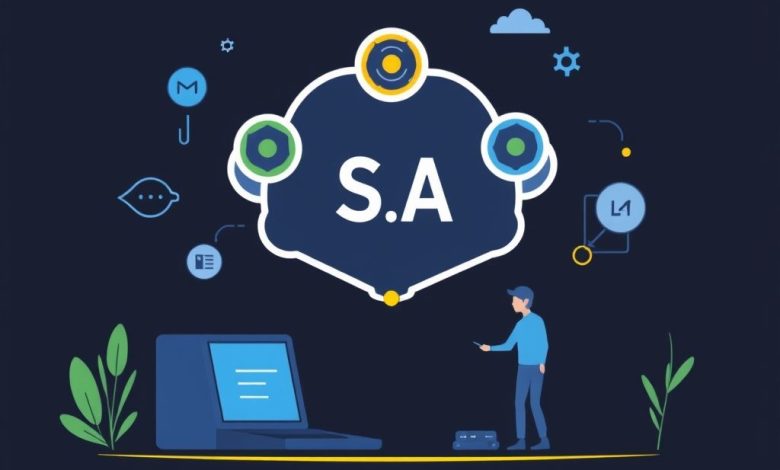Field Service Management with Custom SLA Tiers Optimizing Operations for Additive Manufacturing

Introduction
Field Service Management (FSM) is a critical component of many businesses, particularly in industries such as HVAC, electrical work, plumbing, and home maintenance. It involves managing and coordinating the activities of technicians who provide services directly to customers at their locations. In recent years, there has been a growing trend towards implementing custom Service Level Agreements (SLAs) within FSM systems. This approach allows companies to create tailored pricing structures based on specific tiers of service levels, providing more flexibility and potentially higher revenue streams.
The Evolution of Field Service Management
Field Service Management has come a long way since its inception. From manual scheduling and paper-based reporting to sophisticated software solutions, the industry has undergone significant transformations. Modern FSM systems offer features such as real-time job tracking, automated dispatching, and customer self-service portals. These advancements have improved operational efficiency and customer satisfaction rates.
Challenges in Traditional FSM Models
Traditional FSM models often relied on standardized pricing structures that didn’t account for varying levels of urgency or complexity in service requests. This one-size-fits-all approach could lead to underutilization of resources during slow periods and overcommitment during peak times. Additionally, it failed to recognize the value proposition of faster response times or premium services that might justify higher charges.
Understanding Custom SLA Tiers
Custom SLA Tiers represent a shift away from rigid pricing structures towards more flexible and responsive service offerings. By creating distinct tiers with varying levels of service quality, responsiveness, and associated costs, businesses can cater to different customer segments and market conditions.
Benefits of Custom SLA Tiers
- Increased Revenue Potential: By offering tiered pricing, businesses can capture higher-value customers willing to pay for premium services.
- Improved Resource Allocation: Custom tiers allow for better matching of service levels to job requirements, optimizing resource utilization.
- Enhanced Customer Satisfaction: Higher-tier services can provide quicker response times and more skilled technicians, leading to increased customer satisfaction.
- Competitive Advantage: Unique tiered offerings differentiate a company from competitors and demonstrate a commitment to customer needs.
Implementing Custom SLA Tiers
Implementing custom SLA tiers requires careful planning and execution. Here are key steps to consider:
- Define Clear Tier Levels: Establish distinct service levels with well-defined characteristics, such as response time guarantees and technician qualifications.
- Develop Pricing Strategies: Create tier-specific pricing that reflects the value proposition of each level.
- Train Staff: Ensure all employees understand the new tier structure and how it benefits both the company and customers.
- Communicate Effectively: Clearly communicate the tier options to customers through various channels, including website, marketing materials, and customer service representatives.
- Monitor and Adjust: Continuously monitor the performance of each tier and adjust as necessary based on customer feedback and business metrics.
Case Study: Implementing Custom SLA Tiers in HVAC Services
Let’s examine how an HVAC company might implement custom SLA tiers:
Tier 1: Standard Response
- Response time: Within 24 hours
- Technician qualification: Entry-level technician
- Price point: $75 per hour
Tier 2: Priority Response
- Response time: Within 8 hours
- Technician qualification: Experienced technician
- Price point: $95 per hour
Tier 3: Emergency Response
- Response time: Within 2 hours
- Technician qualification: Senior technician with specialized training
- Price point: $125 per hour
By offering these tiers, the HVAC company can attract customers with different budgets and service needs while maximizing revenue potential.
Best Practices for Managing Custom SLA Tiers
To ensure success with custom SLA tiers, consider these best practices:
- Regularly Review and Update Tiers: As market conditions change and customer needs evolve, reassess tier offerings and pricing.
- Provide Clear Communication Channels: Ensure customers understand their chosen tier and what it entails.
- Invest in Quality Assurance: Maintain high standards across all tiers to justify premium pricing.
- Leverage Data Analytics: Use FSM software data to identify trends and optimize resource allocation across tiers.
- Offer Flexibility: Allow customers to upgrade or downgrade tiers based on their changing needs.
Conclusion
Field Service Management with Custom SLA Tiers represents a sophisticated approach to service delivery and pricing. By implementing such a system, businesses can offer more value to customers, optimize resource utilization, and potentially increase revenue streams. As the field service industry continues to evolve, embracing custom tiered structures will be crucial for companies seeking to stay competitive and meet customer demands effectively.
While there may be challenges in initial implementation, the long-term benefits of custom SLA tiers far outweigh the costs. For field service managers looking to enhance their operations and customer offerings, exploring this approach could lead to significant improvements in both business performance and customer satisfaction.




